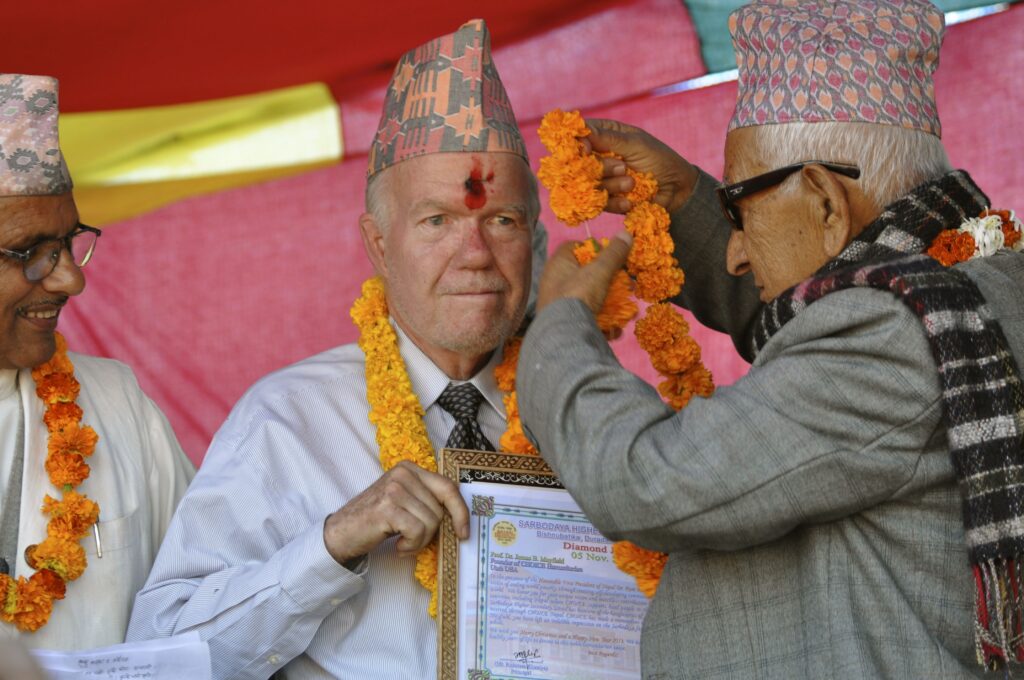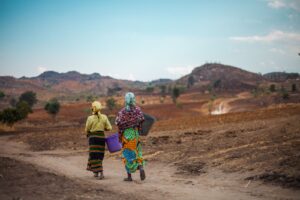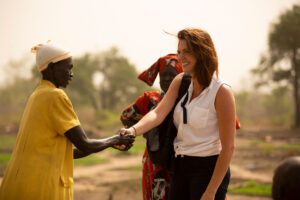
Betty Kibaara — Director of Food Initiatives, Rockefeller Foundation
Leading the Foundation’s investments in Africa, transforming food systems for children that increase access to nutritious foods.
United States
Mood of Living May 2, 2016
Two men, one city, one shared passion – and, today, an impact spread wide across seven different countries. Although to Timothy Evans and James Mayfield “the CHOICE approach is simple: native in-country staff mentor communities and their leaders by organizing and mobilizing them to create their own path out of poverty,” there is nothing truly simple about CHOICE Humanitarian.
Bolivia
Unlike other contemporary aid or humanitarian models, CHOICE is rooted in the villages it works with. CHOICE initiatives follow a five-prong approach: (1) prioritizing gender equity, (2) pursuing only village-driven projects, (3) building intra-village leadership, (4) utilizing native in-country staff and (5) using locally available resources and skills to create simple, appropriate technologies. Everything about CHOICE is about the people –not the volunteers, not the directors, but the townspeople, the “recipients” in other aid models and those who, in CHOICE’s mission statement, “create their own vision out of poverty.”
Ecuador
The story behind CHOICE started with a one very specific person: Dr. Timothy Evans, a practicing dentist in Salt Lake City, Utah. Dr. Evans had spent part of his 20s in Peru, living near the Peru-Bolivia border and fostering a lifelong respect for the country’s vibrant culture. In 1982, he found himself drawn back to the region when a patient told him the heart-breaking story of a young girl’s death from drinking contaminated water. Driven to action by the tragedy’s preventable nature, Dr. Evans shifted from dentistry to philanthropy and established The Andean Children’s Foundation (ACF), CHOICE’s predecessor.
Nepal
The ACF served as an excellent case study for what would ultimately become CHOICE’s fundamental strategy. One of Dr. Evans early projects – and early failures, in a sense – was an attempt to install hand-dug wells and high-density pumps throughout Bolivia. Though progress was made, integration with the surrounding communities remained slow; it wasn’t until the technology was connected to a tangible economic gain that the project began to attain ground.
Guatemala
The people’s reactions, needs and motivations became essential to the success of the wells (and, eventually, associated greenhouses). With perceived economic benefit – not enforced aid – the wells and greenhouses began naturally spreading across villages without the aid of handouts, producing key health and social benefits almost as side effects. Integrally, these new oases became sites of community-driven response and adjustment, not simply foreign projects.
Kenya
The well-pump plan was also integral in introducing the second person that looms large in CHOICE’s history. The peer-review process of Dr. Evans’ grant proposals introduced him to Dr. James Mayfield, political science professor, Fulbright Scholar and rural development specialist. Dr. Mayfield brought not just a conceptual framework, but also practical experience consulting for USAID, UNESCO and the UN.
Peru
To this day, Dr. Evans credits Dr. Mayfield as the source of the most formative advice he has ever received. Dr. Evans said, “he told me I had to really learn about international development. He educated me a lot.” This was both a formal and an informal education, built off of casual conversations and reading lists as well as Dr. Evans’ enrollment in Dr. Mayfield’s classes at the University of Utah.
The ACF truly became CHOICE over the course of the well venture, both in name and in scope. CHOICE was originally conceived as the fundraising arm of the ACF, meant to bring the average person into the project via expeditions programs – raising both funds and providing volunteers for individual undertakings. For their first expedition, Evans and Mayfield expected eight people to join them. They got thirty.
The wild success of the participant-funded expedition program encouraged Evans and Mayfield to incorporate it more fully into the ACF structure. This gradually became the CHOICE structure, as the focus expanded away from the Andes and the two organizations merged. The CHOICE expeditions became not just about finishing projects, but also about educating the general public and creating more effective links between villager and donator.

Today, CHOICE is a Charity Navigator-rated 4-star organization (the highest a nonprofit can receive for transparency in funding and management). Inaugurations of CHOICE-supported projects have received audiences as huge as 10,000 people and as prestigious as the President of Nepal. As of 2015, CHOICE mobilized volunteers and villagers across Mexico, Bolivia, Guatemala, Peru, Ecuador, Nepal and Kenya, with room to grow. Looking back, Dr. Evans joked, “It’s a good thing I didn’t know how hard it is to start an organization and to move the needle in extreme poverty. I probably wouldn’t have started!”
From one Utah city to 32 years and seven countries of change, CHOICE is emblematic of what can happen when you, as Dr. Evans advised, “find a role where you’re not just throwing money at a problem. Incorporate a personal involvement, because caring for someone else gets people outside of themselves. You can change yourself by helping others.”
Photography courtesy of CHOICE Humanitarian

Leading the Foundation’s investments in Africa, transforming food systems for children that increase access to nutritious foods.

charity: water — A non-profit organization founded in 2006 by Scott Harrison.

Founder Treana Peake, supports artisan partnerships and funds development work through the Obakki Foundation.